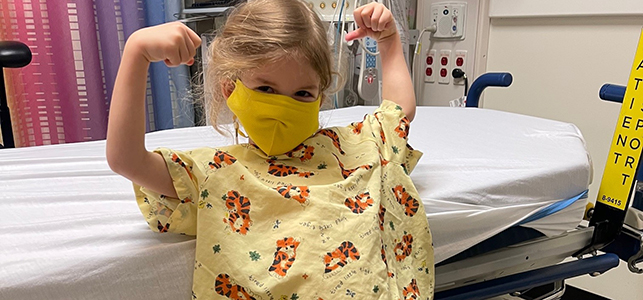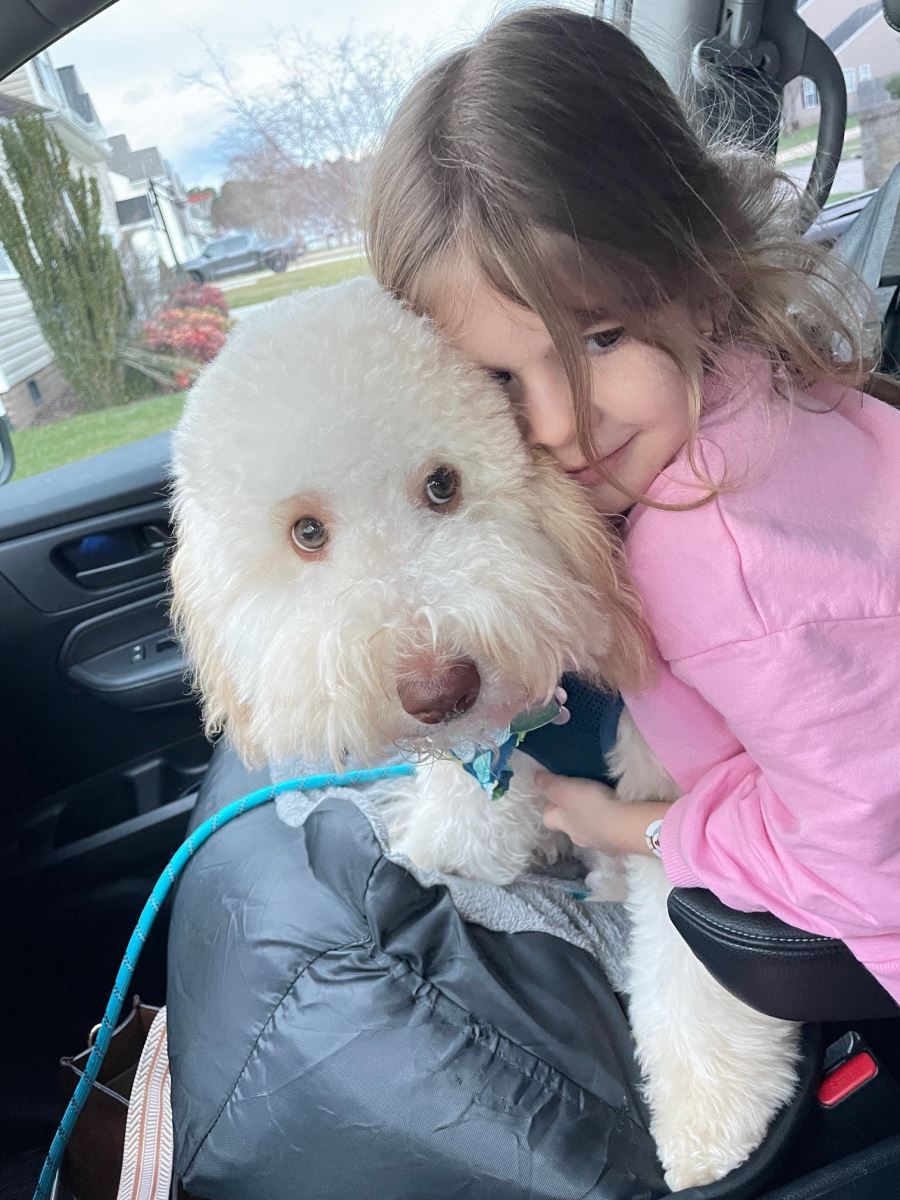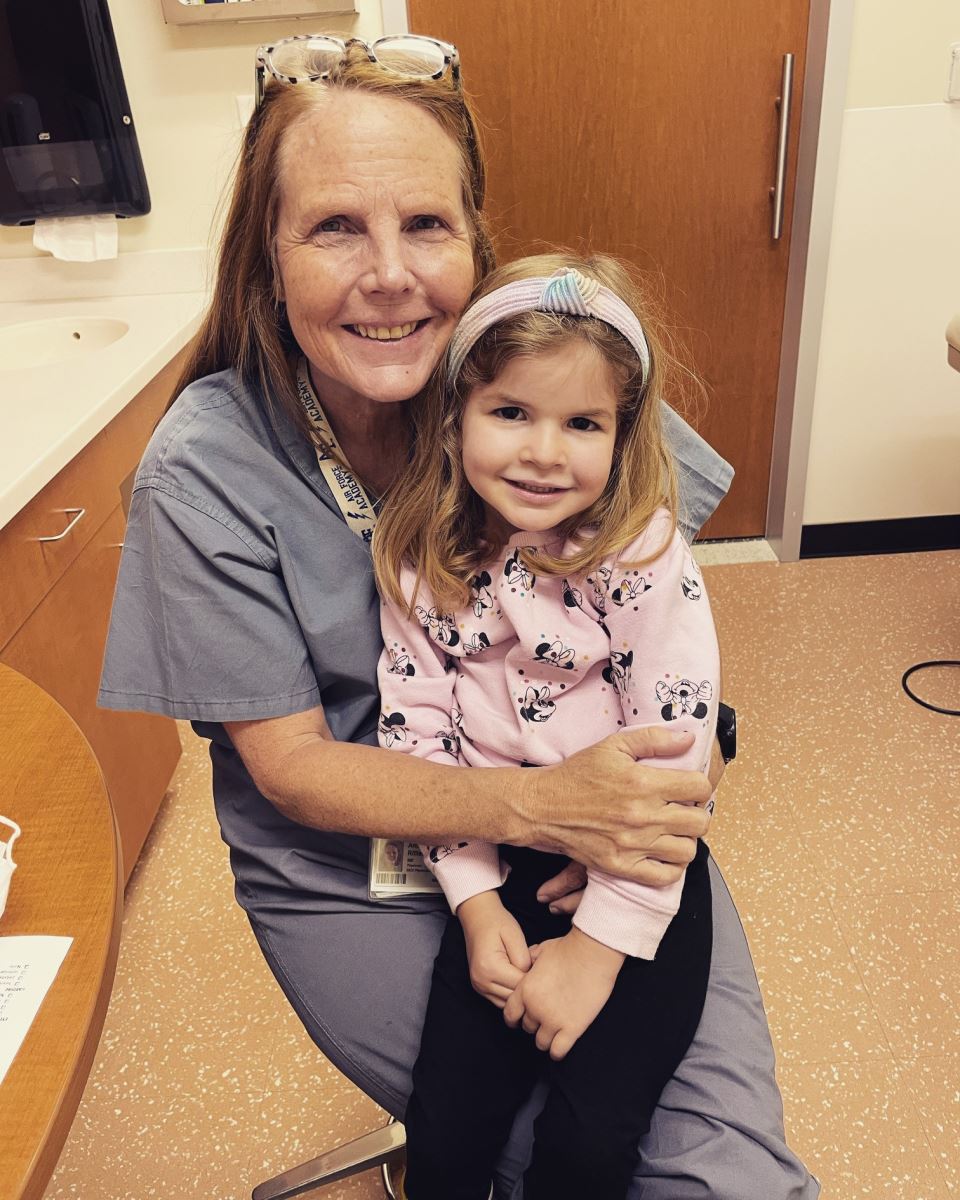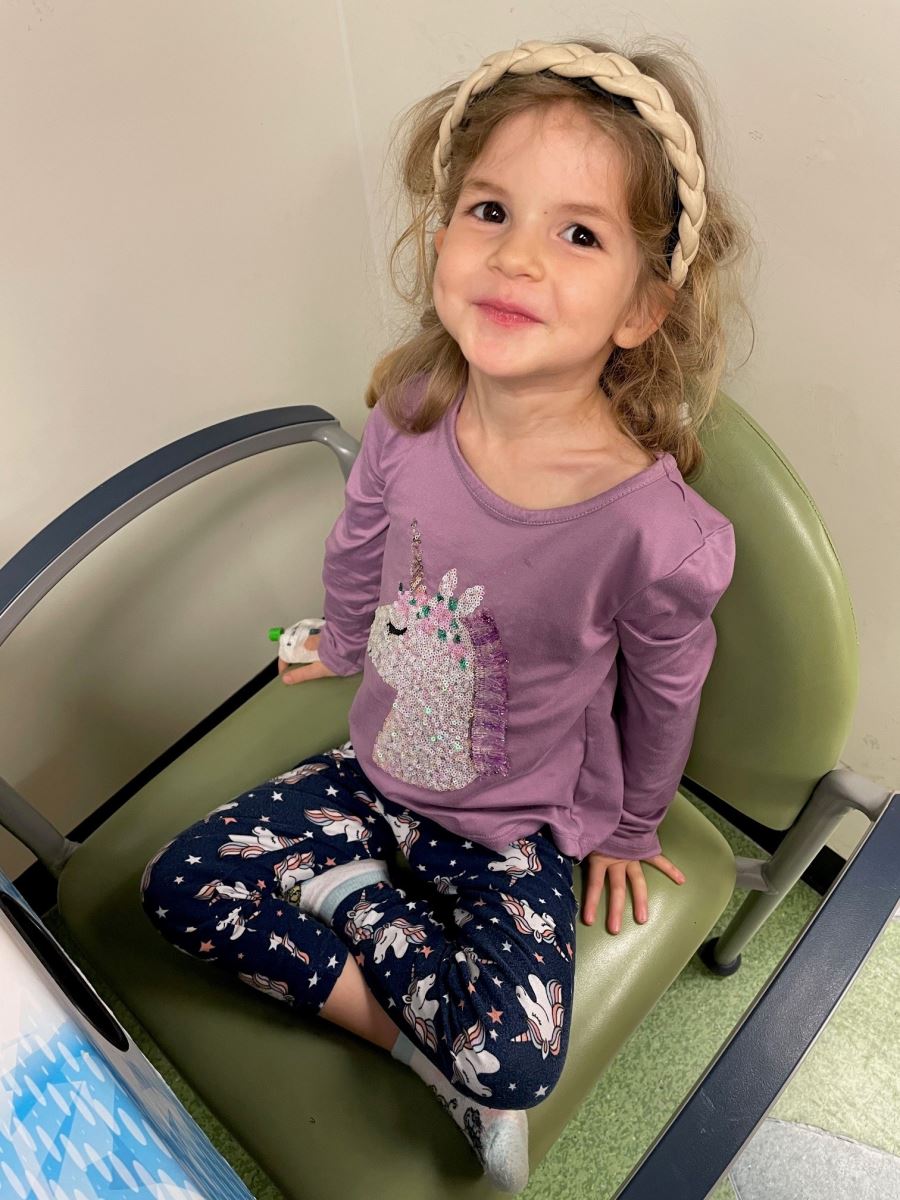Children's Emergency Department is now located in Children's Tower: 1001 E. Marshall Street.
Learn more
 Traveling for a selective dorsal rhizotomy procedure with Dr. Ann Ritter at CHoR
Traveling for a selective dorsal rhizotomy procedure with Dr. Ann Ritter at CHoRMadison Kreider hasn’t always loved being around dogs. That’s because her cerebral palsy made her unsteady on her feet. Following neurosurgery with Dr. Ann Ritter, Madison’s family welcomed a new puppy, Finn, and she’s getting ready for more monumental firsts.
As Madison neared her first birthday, her parents, Lauren and Matthew, noticed she wasn’t hitting some key milestones. Her pronated ankles – commonly caused by tight calf muscles – were some of the first signs of her cerebral palsy. She was seeing a physical medicine and rehabilitation doctor and began physical therapy close to home in Virginia Beach, but no one in the area performs the selective dorsal rhizotomy surgery that could help relax the muscles in her legs and reduce pain. Madison’s doctor referred her to Dr. Ritter at CHoR when she was 3.
“Madison had a spastic diplegic gait, which means she was a little weak in her legs. She was strong enough to walk, but her spasticity was hindering her. That tightness in her legs was preventing her from walking steadily,” said Dr. Ritter. “We did an exam, and she definitely showed she’d benefit from a dorsal rhizotomy. She loves physical therapy, so I knew she’d be able to do her physical therapy afterward. Her parents were very motivated, so she was a perfect candidate for the surgery.”
The Kreiders traveled to Richmond to meet Dr. Ritter and her team. They were immediately confident the surgery was the right choice for Madison.
“Dr. Ritter and her nurse, JoAnn, were super helpful leading up to the surgery,” said Lauren. “The social worker helped us navigate insurance and coordination between hospitals. We also got to talk to a family who had surgery with Dr. Ritter about a year before, which was nice and helpful in making our decision.”
 Madison’s surgery took place on February 1, 2023, just before her 4th birthday.
Madison’s surgery took place on February 1, 2023, just before her 4th birthday.
“It’s a selective dorsal rhizotomy. Selective is because we only take portions of the nerve root that we feel are affected. Dorsal refers to the sensory roots of the spinal cord and rhizotomy means ‘cutting of.’ So, we’re selectively cutting roots that stimulate places they’re not supposed to stimulate,” added Dr. Ritter.
In addition to improving gait and flexibility, the Kreiders hope the selective dorsal rhizotomy will also prevent chronic pain, contractures and other issues that constantly spastic muscles could cause for Madison down the road.
The surgery took about 2 hours. Because it involved opening the dura – or covering around the spinal cord – Madison had to lie flat, but comfortably, for 48 hours afterward to allow for initial healing. She spent this time in the pediatric intensive care unit.
“Immediately upon waking up from surgery, we could tell she had a lot of flexibility she didn’t have before,” recalled her parents.
CHoR physical therapists worked with Madison to get her legs moving and even begin retaking steps in the hospital. In under a week, she transferred to an inpatient rehab hospital near her home. Madison underwent 3 weeks of intensive therapy there to relearn how to walk without spasticity and build strength she didn’t have before.
After returning home, Madison continued outpatient therapy.
 “The goals of the procedure are to reduce spasticity, and by reducing spasticity, patients are able to walk or run or play games that they weren’t able to play before,” said Dr. Ritter.
“The goals of the procedure are to reduce spasticity, and by reducing spasticity, patients are able to walk or run or play games that they weren’t able to play before,” said Dr. Ritter.
The surgery was a success! Madison enjoys playing outside, riding her bike and scooter, and keeping up with her big sister.
“The biggest thing we noticed was her flexibility. She jumps in place, which is something she could never do before. She can step up on a curb without holding on. She puts her legs in a butterfly position. She sat like that a bunch at first. She was so excited,” Lauren said. “We’ve been continuing to see gains for a full year after surgery.”
Madison is also really helpful with feeding the puppy and bringing him water, two things she didn’t previously have the strength and balance to do. She loves preschool and her teachers too.
“She’s so smart. She will call you out on anything,” Mom added with a laugh. “She’s been a trooper through everything. She’s always smiling.”
Madison just turned 5 and is eagerly anticipating a family trip to Ireland and starting kindergarten later this year. On March 25 – National Cerebral Palsy Awareness Day – the Kreiders encourage you to wear green and take a walk in honor of Madison and others overcoming cerebral palsy.